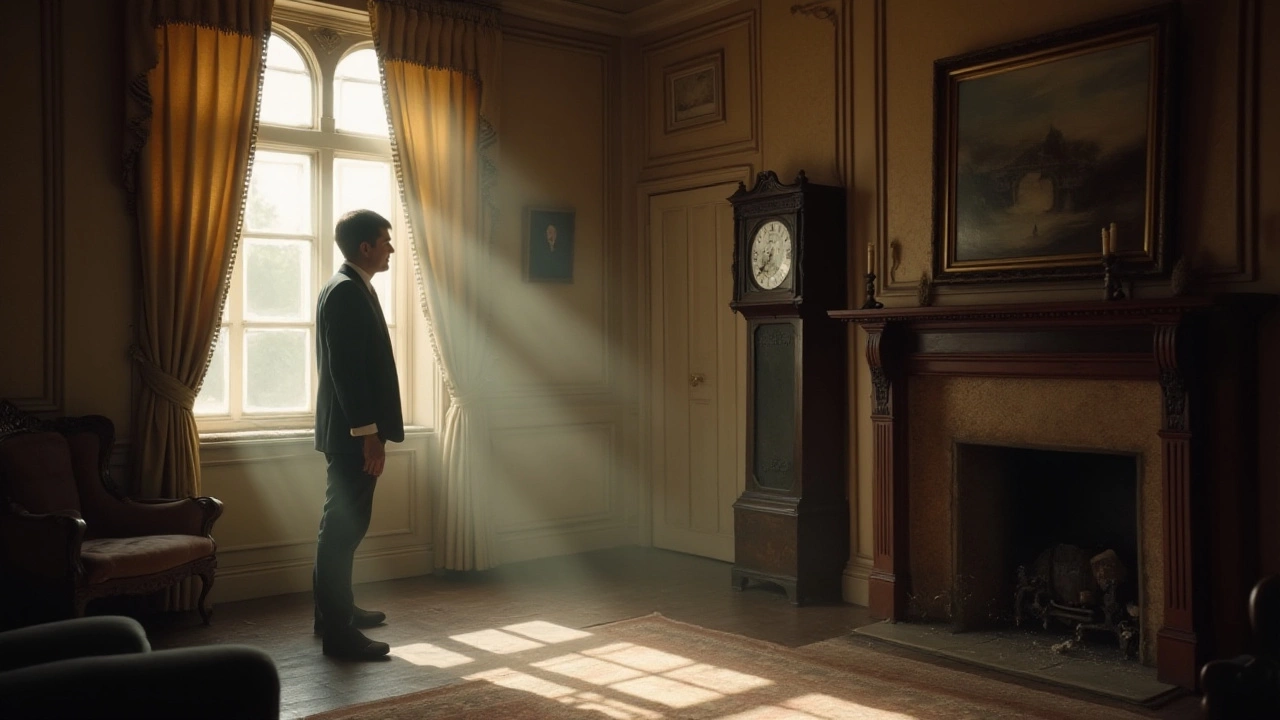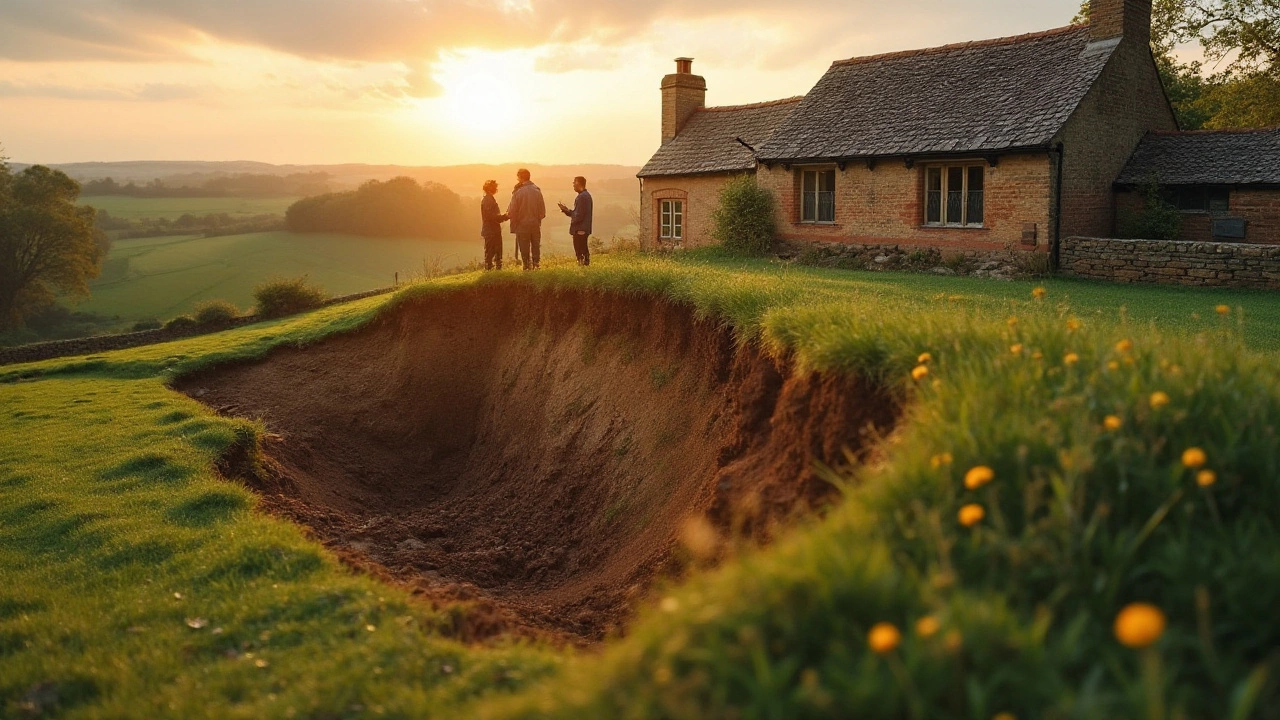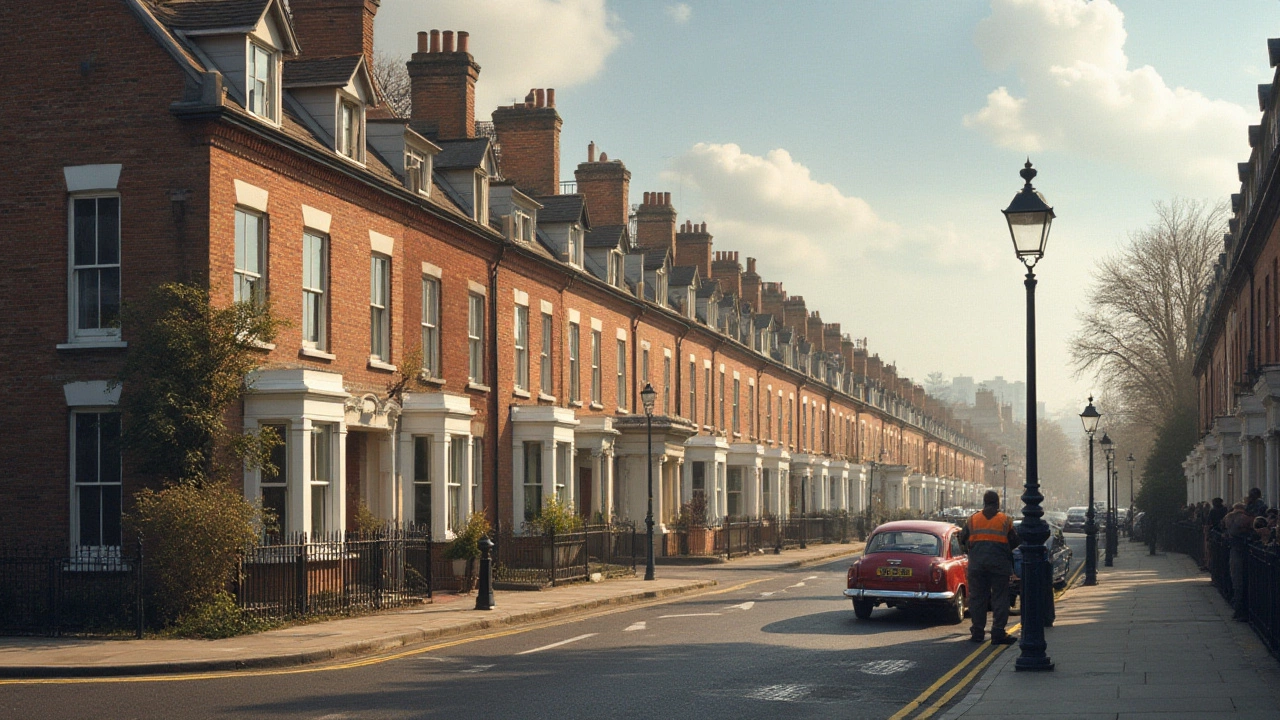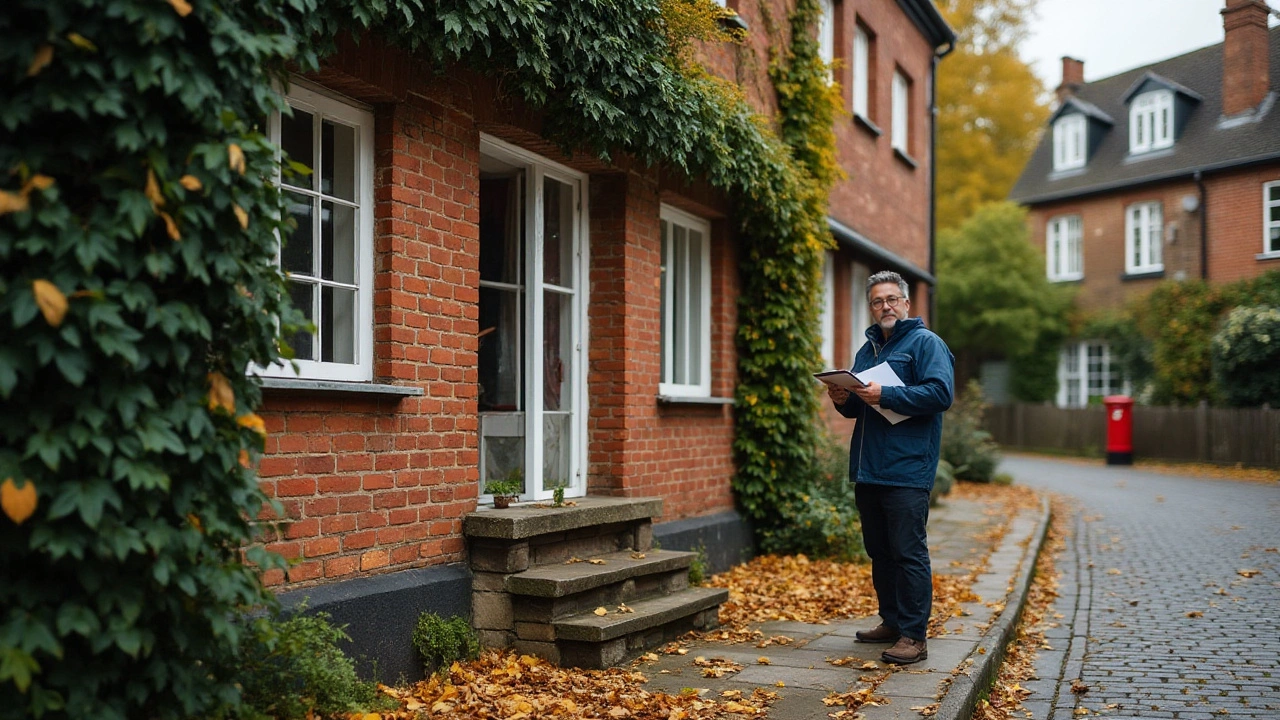Older homes possess a unique character that often draws people in—their aged wood, intricate details, and history whisper stories of times long past. However, these vintage homes can experience foundation problems due to several factors related to their age. It's important for homeowners to recognize these issues early to ensure the longevity and safety of their beloved abode.
In many cases, foundation problems may stem from environmental factors, wear and tear, or simply the original construction methods and materials that have aged over time. Identifying the signs, understanding the causes, and knowing what steps to take is essential in preserving both the structural integrity and the value of a home. This article will guide you through the essential information and the practical advice needed to tackle these challenges effectively.
- Signs of Foundation Problems in Older Homes
- Causes of Foundation Issues
- Inspection and Assessment
- Repair and Prevention Tips
Signs of Foundation Problems in Older Homes
Living in an older home can feel like you're holding a piece of history, but beneath those charming features, foundation problems might be lurking. Recognizing these issues early can save you a lot of trouble. One of the most telling signs is cracks in the walls or ceilings. These cracks might seem harmless at first, but they can indicate significant structural issues. As homes age, the shifting soil beneath can lead to tension and stress, manifesting in these visible fractures. Pay attention to how these cracks progress. If they widen over time, it's time to seriously consider professional assessment and possible foundation repair.
Another common sign is doors and windows that don't open or close smoothly. This might seem like a minor inconvenience, but it often indicates that the door and window frames have shifted due to changes in the foundation. This shift can also lead to uneven floors. Take a walk through the house and notice if you feel any slopes or dips. Uneven floors not only make walking awkward but also suggest deeper issues beneath that warrant attention. Unevenness often goes unnoticed until significant damage becomes apparent, which is why regular inspection is beneficial.
A significant tell that many homeowners overlook is excess moisture in the basement or crawl space, which might not only point to a potential foundation problem but also raise a red flag for water damage. Increased moisture levels can lead to wood rot and mold, which undermine the home’s foundation even further. maintaining the right drainage system is crucial to directing water away from the house, avoiding the possibility of water seeping into the foundation and causing an assortment of problems.
Selain itu, take note of walls that bow or lean, which are often the consequence of foundational shifts and outside pressure from soil around the home. This kind of movement isn't easily repaired and could imply that other parts of the foundation are stressed as well, particularly in older residences where the materials used might have exhausted their durability. Regular inspections by a specialist can help in detecting these problems early.
"Home is the nicest word there is," said renowned author Laura Ingalls Wilder, but for that to remain truth, your home must be safe and sound from structural imperfections that could irk that very sentiment.
Lastly, don't overlook the exterior. A quick walk around the perimeter of your home can reveal signs like sagging roofs or a chimney that's leaning which might suggest that the foundation is not as stable as it first seems. Small shifts in the foundation can have a cascading effect, impacting every part of the structure. These initial signs of damage are crucial for preemptive action, ensuring that minor concerns don't evolve into substantial, costly repairs.

Causes of Foundation Issues
When it comes to the charm of older homes, it often comes with a hidden cost—foundation problems. These issues can be traced back to various factors that accumulate over decades. One primary cause is the natural settling of the ground upon which the house was built. Over time, soil can shift due to different environmental factors like heavy rain, drought, and even minor earthquakes. These shifts often lead to structural stress that tests the limits of the initial foundation design and materials.
A key contributor to these shifting dynamics is poor drainage around the home. When the earth absorbs water, it expands, and when it dries, it contracts—this push and pull movement can wreak havoc on a house’s foundation. Older homes might not have been built with modern drainage solutions, leading to water pooling near the base of the structure. In fact, according to a study from the American Society of Civil Engineers, inadequate drainage is a leading cause of foundation issues, affecting approximately 80% of homes with structural problems.
Aside from the natural external factors, materials used in the construction period of older homes play a significant role in foundation problems. Back in the day, bricks, stone, and mortar, which are less elastic and more prone to cracking under pressure, were commonly used. The lack of steel reinforcement, prevalent in modern constructions, means that these materials face greater strain over the years. As foundation materials weaken, they are less capable of coping with the pressure from soil movement and moisture-related expansion or contraction.
Human Activity and Environmental Impact
Though the earth and materials are major players, human activities over time add layers of complexity to the issue. Renovations and additions alter the original load balance, causing uneven pressure distribution on the foundation. Whenever extensive changes are made, such as adding rooms or significant structural alterations, the foundation may need to support more weight than originally planned. Without proper structural assessment and adjustments, these modifications increase the risk of developing stress-induced fissures in the foundation.
Urban development and landscaping efforts can also shift the balance of soil and water pattern around a property. Sometimes, nearby construction can alter the flow of underground water, leading to changes in the moisture level of the soil under older homes. This alteration can cause unforeseen foundation stress, leading inevitably to significant foundation problems. Homeowners should be mindful of not just their property changes but also external factors in their neighborhood that might indirectly impact the integrity of their home’s foundation.
Cecil Adams, a recognized voice in home restoration, once said, "A foundation problem is like an unseen monster beneath your home—it lurks and lingers until it’s far too late for easy remedies." These words encapsulate the essence of being proactive rather than reactive when it comes to maintaining an older home’s foundation.
Understanding the multitude of potential causes for foundation issues in older homes is the first step in mitigating their negative effects. From natural environmental shifts to human-induced changes, each factor plays a role in testing the durability of these charming yet often fragile structures. Recognizing and addressing them early on can save time, money, and a piece of history before it’s too late.

Inspection and Assessment
When it comes to older homes, a thorough foundation inspection is vital to uncover existing or potential problems. These inspections typically start with a visual assessment, which can be conducted by the homeowner as a preliminary check or by a professional. Homeowners can begin by walking around the outside of the house, looking for signs of cracking in the foundation or brickwork. Inside, they can search for cracks in the walls and uneven floors, both key indicators of potential foundation issues. Sagging or sticking doors and windows that are difficult to open or close may also be red flags.
Engaging a professional to perform a comprehensive assessment is usually the best move after a preliminary inspection hints at possible problems. Professionals use specialized tools like levels, measuring tapes, and water leveling tools to examine the foundation’s condition in a more detailed manner. They also often look for moisture accumulation and examine the soil around the foundation. This step is crucial because water can be a major contributor to foundation problems in older homes. If the soil retains too much moisture, it can expand and contract, leading to shifts and cracks.
According to the National Association of Home Builders, "Routine home maintenance and inspections can extend the life of a home significantly."
This step also involves looking at historical data and blueprints if available. Understanding the original construction materials and techniques can provide insight into possible weaknesses. Some experts maintain that methods used a century ago might not be as stringent as today's standards, allowing room for potential structural weaknesses to develop over time. But, that's not always the case—quality craftsmanship, in some cases, withstands the test of time better than modern quick builds.
Once the initial inspection and assessment is complete, homeowners and inspectors move on to mapping out the exact areas that need attention. This can include detailing each crack and determining whether it’s indicative of a significant issue or merely cosmetic. Professionals utilize tools with pinpoint accuracy to create a map of potential problem areas. With this information, they can propose actionable plans, often listing them with a priority ranking to help homeowners decide where to begin.
It is worth noting that not every foundation problem is catastrophic. Many older homes experience minor settling, which is a natural process over time. Yet, the challenge is discerning between settling and structural problems. Homeowners should note that even minor defects should not be ignored, as they can lead to costly repairs in the future if allowed to worsen. It’s always wise to keep a vigilant eye and address even minor issues promptly to preserve the investment made in your home.
Technology in Inspection
The advancement of technology offers new solutions in the inspection process. Nowadays, professionals use laser scanning, drones, and thermal imaging to gain a complete perspective of foundation conditions. These tools provide far more data with higher precision than traditional methods. For example, drones equipped with high-resolution cameras can reach high or difficult-to-access spots, while thermal imaging helps detect moisture and heat loss that could impact the foundation.
By utilizing these advanced methods, homeowners can gain peace of mind and a well-rounded assessment of their property. Coupling technological methods with expert insights ensures a comprehensive approach to foundation repair. Establishing a working relationship with a reliable foundation expert or company also ensures that future issues are addressed quickly and efficiently, often preventing minor problems from escalating.

Repair and Prevention Tips
Tackling foundation problems in older homes requires a blend of understanding the root causes and proper application of repair techniques. One of the initial steps is to perform a detailed inspection of the whole structure. This assessment involves looking for visible cracks in walls, floors, and the exterior, which are often the first indicators of possible foundation issues. Uneven floors and doors that don't close properly can also spell trouble. Professional evaluations might offer advanced insights into what might be happening below the surface. Homeowners should consider consulting a structural engineer, especially when significant repairs are anticipated, to get a comprehensive understanding of the house's needs.
When it comes to repair methods, the options vary depending on the degree and type of damage. For minimal issues, cosmetic repairs may suffice, involving patching up cracks or reinforcing minor structural components. However, more serious problems might necessitate house leveling or underpinning, which involves reinforcing the existing foundation or extending it to more stable soil strata below. These processes are not only technical but costly. It's vital to choose contractors with proven experience in foundation repair to ensure that the work meets safety standards and secures the home for years to come. Utilizing modern advancements in repair technologies, like steel piers or helical piers, can significantly enhance the process.
Prevention plays a crucial role in maintaining a healthy foundation. Simple measures, such as improving drainage systems around the home, can make a significant difference. By making sure water flows away from the foundation rather than pooling around it, you can prevent water-related damage. Landscaping can also influence foundation integrity. It’s wise to avoid planting trees or large shrubs too close to the house because their roots can disturb foundations, especially in older homes where construction practices might not have accounted for such natural growth. Homeowners are encouraged to keep an eye on irrigation and ensure that nearby soil stays appropriately moist—neither too dry nor soggy. As an article from Architectural Digest beautifully puts it,
"Preventive maintenance is your best defense against foundation issues, just as a stitch in time saves nine."
Regular monitoring and maintenance are essential. Scheduling periodic inspections—yearly or biannually—can help catch potential issues before they escalate into bigger troubles. Simple preventative measures, like caulking small gaps and ensuring that the house is properly weather-proofed, go a long way in safeguarding the home’s foundation. It's not uncommon for older homes to develop slight imperfections as they settle with age, but a proactive approach to home maintenance can mitigate serious foundation issues. This strategic approach ensures the charm of older homes is preserved while protecting the investment in the most substantial way possible.
